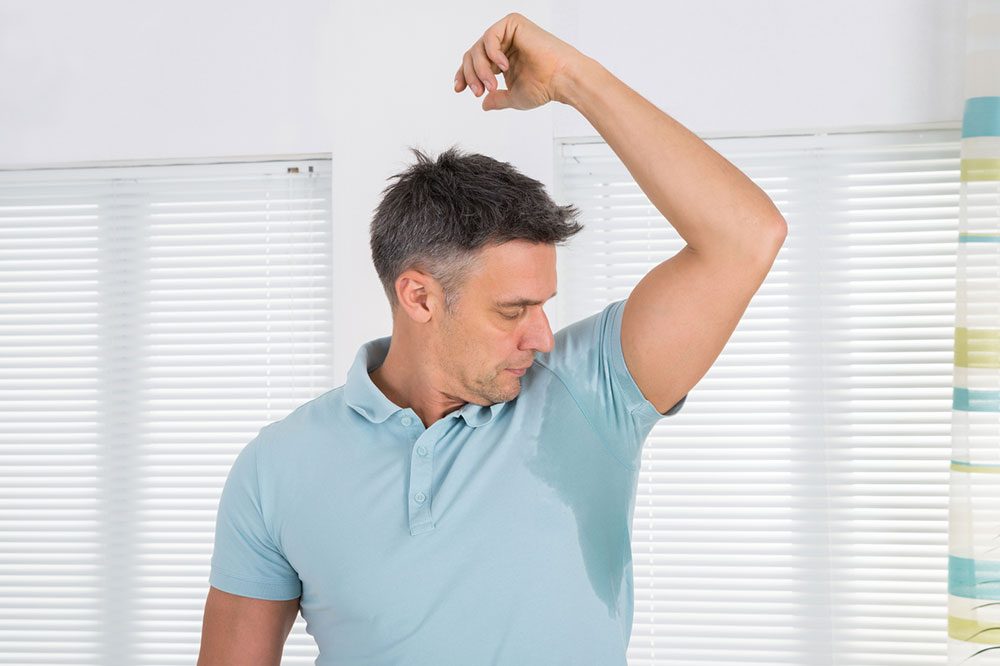
4 Lifestyle Tips for Hyperhidrosis
Sweating profusely is a common medical condition called hyperhidrosis. Sweating is completely natural; it’s how your body regulates its temperature. However, in some cases, it can be extreme and result in noticeable damp patches or stains on the underarms and other areas. This can make an individual’s life difficult by making them persistently anxious and self-conscious in social situations. To help you, here are some lifestyle tips you can follow to manage excessive sweating.
- Wear antiperspirant
Using an antiperspirant daily is the most effective and practical lifestyle tip for hyperhidrosis. Antiperspirants contain metals such as zinc and aluminum, which block sweat glands and prevent excessive sweating. While an antiperspirant is typically used on the underarms, you can also apply it to other areas prone to sweating, such as hands and feet. For best results, experts advise using an antiperspirant before going to bed, as this is the period when the sweat glands are least active. Although it’s effect lasts until the next day, you can apply it again in the morning with deodorant. Experts also suggest shaving armpit hair regularly to improve antiperspirant’s effectiveness and reduce sweat odor.
- Stay well hydrated
It may seem counterintuitive, but keeping your body hydrated can prevent embarrassment of sweaty underarms, hands, and feet. Drinking water helps cool the body, which naturally reduces the chances of maintaining ideal body temperature through sweating. It’s crucial to drink at least 8 cups of water each day, but you can drink up to 12 cups. Additionally, include plain yogurt and a few water-rich fruits and veggies in your diet, such as watermelon, strawberries, oranges, celery, lettuce, and zucchini.
- Wear breathable and loose-fitting fabrics
Keeping your body cool at all times is helpful and the best way to do that is by choosing loose-fitting clothes made of breathable, natural materials like cotton or linen. These clothes allow your underarms to cool properly and prevent sweating. You must avoid wearing tight-fitting clothes and clothes made of synthetic fibers like nylon, rayon, or silk, as these fabrics will make you feel hot and increase sweating. Also, choose black, dark navy, or patterned clothes, as these colors and designs make sweat less visible to other people. If you have sweaty feet, wear shoes made of natural fiber, such as leather, and get a pair of cotton socks or athletic socks designed to absorb moisture.
- Change your diet
Besides adding hydrating foods to your diet, consider including foods that can help calm your overactive sweat glands. Experts recommend eating foods that are easy on your digestive system and keep your nervous system relaxed. Some sweat-reducing foods to add to your meals and snacks include almonds, bananas, sweet potatoes, oats, green tea, milk, cheese, and other fruits and veggies with high calcium content. It’s also important to limit the consumption of foods that can increase sweating such as spicy foods like chili or hot peppers; fatty, processed foods like packaged sausages; and salty foods like potato chips.


